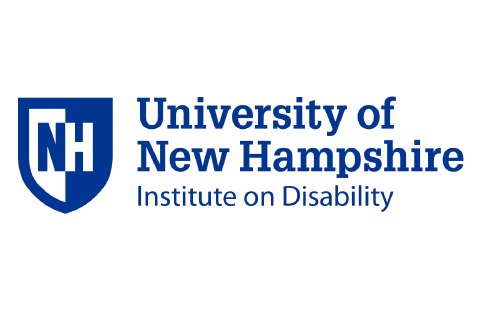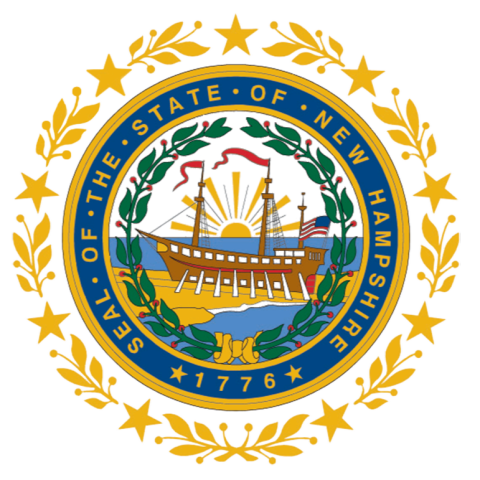What is RENEW?
RENEW is an evidence-informed, youth-driven planning process that focuses on school-to-adult life transition for youth and young adults who face emotional, behavioral, or social challenges. RENEW is an application of family and youth-driven wraparound, including many of the principles and strategies as defined by the National Wraparound Initiative for transition-aged youth. RENEW focuses on the youth’s career-related goals and helps them develop a team of people and resources specific to helping them achieve a successful transition to adulthood.

One in six U.S. youth aged 6-17
One in six U.S. youth aged 6-17 experience a mental health disorder that
interferes with their ability to function well in home, school, or in their communities.
Source: CDC
Why do we need RENEW?
One in six U.S. youth aged 6-17 (16.5%) experience a mental health disorder that interferes with their ability to function well in home, school, or in their communities. The types of impairments vary, from severe depression and anxiety, to acting out behaviors and aggression. Many of these youth are at high risk of becoming disengaged from school, families, and friends. Youth who experience an emotional or behavioral health disorder in adolescence are also at risk developing a substance use disorder, ending up in the justice system, homeless, learning difficulties, and losing their social support system. As high school dropouts, their prospects for work and financial stability are poor. In addition, only 50% of adolescents with a mental health disorder receive or engage in treatment. RENEW is designed to address these risks by engaging the youth, elevating their voice, formalizing a plan that they have designed, and building or rebuilding their social and formal support network.
Who is RENEW for?
RENEW is designed for transition-aged youth (14-26) who are experiencing challenges in their home, school, and community. RENEW works best for youth who have not engaged in or responded well to other types of treatments, interventions or supports and who need a plan for achieving success in home, school, or community. It is youth-driven and team-based so that the youth learn how to plan, problem-solve, and ask for help. These are all important life skills designed to set the youth up for success as they move through young adulthood.

Is RENEW effective?
Studies measuring how youth function before versus after engaging in RENEW have shown positive results, including improvements in:
- Behavioral functioning.
- School engagement.
- Academic performance.
- Engagement in work and work-related activities.
- Confidence or self-efficacy.
- Feeling more in control of their lives.
- Feeling like they have a team of helpers.
Who provides RENEW?
RENEW is provided by trained facilitators in high schools, community mental health centers, other community-based treatment providers, and residential treatment centers. School social workers, school counselors, and community mental health workers often provide RENEW as one of the tools in their counseling toolbox. RENEW was developed by the children’s behavioral health team at the Institute on Disability at the University of New Hampshire in 1996 and supports training and research through the Center for RENEW implementation.
What can I expect if I receive RENEW?
Much like wraparound, RENEW is a 4-phase process.
Phase 1
The process begins with engagement. There is an orientation and then the youth and facilitator engage in a process called “personal futures planning,” using graphic facilitation. During this phase, the facilitator brings the youth through a series of 10 topics and displays the youth’s responses on flip chart paper.
The topics are, in order:
1. Your story or history.
2. Your situation today.
3. Your strengths and accomplishments.
4. Your people and resources.
5. Your preferences: what works and what doesn’t work.
6. Your dreams.
7. Your concerns.
8. Your underlying needs.
9. Your goals.
10. Next steps.
Phase 2
The youth and facilitator then move into the next phase to develop a plan and identify what is needed for resources -- typically people -- to achieve their goals. Based on family and youth-driven wraparound planning, each youth forms a uniquely-constructed team that brings people and resources together to support them. The youth decides who will be on their team and how individuals will be asked to participate. In addition, the RENEW Facilitators work with their youth to develop team meeting ground rules, meeting agendas, and the youth typically leads the meetings.
Phase 3
After the team has been formed and the plan and their roles have been established, the youth and facilitator move into phase 3: monitoring progress towards goal attainment and adjusting the plan when needed. Facilitators check-in frequently with the youth and with team members to assess progress and problem-solve.
Phase 4
The final phase is when the youth is independent in their ability to pursue their goals and have a stable support network. This phase is when they transition out of or graduate from RENEW.
How can I find out more about RENEW training or RENEW Facilitators in my community?
To find out more about RENEW, including how to access training or where RENEW is being implemented, please visit the Center for RENEW Implementation at the Institute on Disability at the University of New Hampshire.

Learn More:
CDC https://www.cdc.gov/childrensmentalhealth/features/school-aged-mental-h…
Campbell, Walker, & Egede, 2016: Merrick, Ports, Ford, Afifi, Gershoff, & Grogan-Kaylor, 2017; Poulton, Caspi, Milne, Thomson, Taylor, Sears, & Moffitt, 2002
Malloy, JoAnne; Manisco Chapo, Sara; and Francoeur, Kathryn (2023) "Moving Beyond Trauma: Activating Resilience to Support Our Most Vulnerable Youth," International Journal of School Social Work: 8(2). https://doi.org/10.4148/2161-4148.1118
Malloy, J.M., Sundar, V., Hagner, D., Pierias, L. & Viet, T. (2010). The efficacy of the RENEW model: Individualized school-to-career services for youth at risk of school dropout. Journal of At-Risk Issues, 15(2), 17-25.
The National Center on Advancing Person-Centered Practices and Systems guide.


